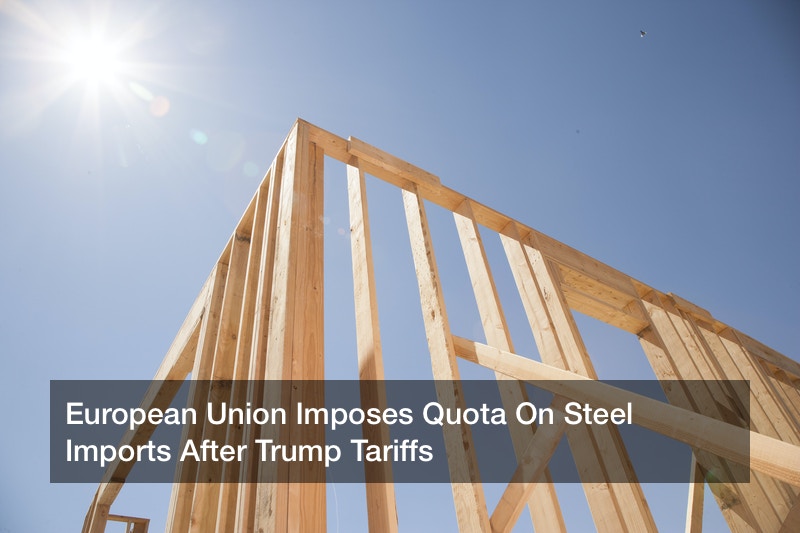

The European Union will be curbing its steel imports in response to U.S. steel tariffs. According to Reuters, the EU imposed a quota on low-cost steel imports on Saturday, February 2, to alleviate the concerns of EU steel producers.
The two precious metals most often used in jewelry are alloys of silver and gold. Sheet metal alone accounts for about $30 billion in the United States. EU steel producers say that Europe could be flooded with steel that the U.S. will no longer be importing due to the tariffs imposed by the Trump administration. To prevent this, the EU will place limits on major exporting countries. The quotas will apply for three-month periods to prevent stockpiling.
In 2016, the world produced more than 1.6 million tonnes of steel, which increased to 1.69 billion tonnes in 2017. The main exporters of steel to the EU include India, China, South Korea, Turkey, Ukraine, and Russia.
The new EU quotas will impact 26 steel product categories including sheet piling and stainless wire rods. The quotas are set at the average of imports between 2015 and 2017 with an additional 5%.
Once the quotas have been filled, the EU will apply 25% tariffs on steel imports. These tariffs will replace the measures that were imposed in July 2018.
The EU measures will stay in place for three years and will rise by 5% beginning on July 1, 2019. The European Commission also reports that the quotas will rise by another 5% in 2020.
Speakers for the steel group Eurofer said that the measures are justified because of the diversion of steel from the U.S. to the EU market. The European auto manufacturers association (ACEA) agreed, saying the action is protectionist.
Steel is used in a variety of industries and products such as snowmobiles and smart homes. Just last year, up to 118,657 snowmobiles were sold worldwide and 4.6 million smart homes, as of 2015, were built in the United States.
The U.S. steel tariffs not only impact the cost of manufacturing these products in the U.S. but also in Europe. The European Commission reports that import volumes in the EU have increased significantly from March 2018. That being said, by 2020, every major U.S. container port is projected to be handling at least double the volume it was designed for.
March was when the U.S. first imposed its 25% steel tariffs and 10% aluminum tariffs. The U.S. later extended these tariffs to the EU in June 2018.
The EU will exclude some developing nations from the new measures. The EU will also exclude South Africa, Norway, and countries from the European Economic Area.
Surprisingly, the EU won’t be excluding Switzerland from the new quotas. Switzerland has close ties with the EU and is home to steel company Schmolz and Bickenbach.
Switzerland is pushing for exemption from the measures but says country-specific quotas will prevent a repeat of what happened in December last year. Global steel quotas had been filled in December 2018, causing the Swiss to stop its deliveries to Europe.
Although the EU quotas are set to remain in place for the next three years, they can be lifted under certain circumstances. One of those circumstances is a repeal of U.S. steel tariffs, which could happen depending on a possible US-China trade deal.
President Donald Trump recently wrapped up talks with China’s vice premier Liu He on Thursday, January 31. The talks were made in an effort to create a deal ahead of a 90-day trade truce that will expire on March 1.
China is the driving force behind global steel production. The country first matched U.S. steel output in 1993, but now produces 10 times as much steel.
The Trump administration’s 25% tariffs on steel imports were imposed to give the U.S. steel industry a competitive boost. But global economic uncertainty and cost increases among U.S. manufacturers have left many feeling disappointed in the tariffs’ overall effects.
U.S. steelworkers, in particular, aren’t happy. Although U.S. steel producers have seen benefits from the 25% tariffs, workers haven’t seen wage increases or increases in health benefits.
“U.S. Steel was in trouble and workers understood that and worked with them. We did not demand, nor did we receive any pay increases,” said Tom Ryan, the Chairperson of the United Steelworkers.
“We felt like we made sacrifices to help keep that company on its feet,” Ryan said. Now U.S. Steel is lined up to have a significant recovery and we want to have a part of that recovery.”



